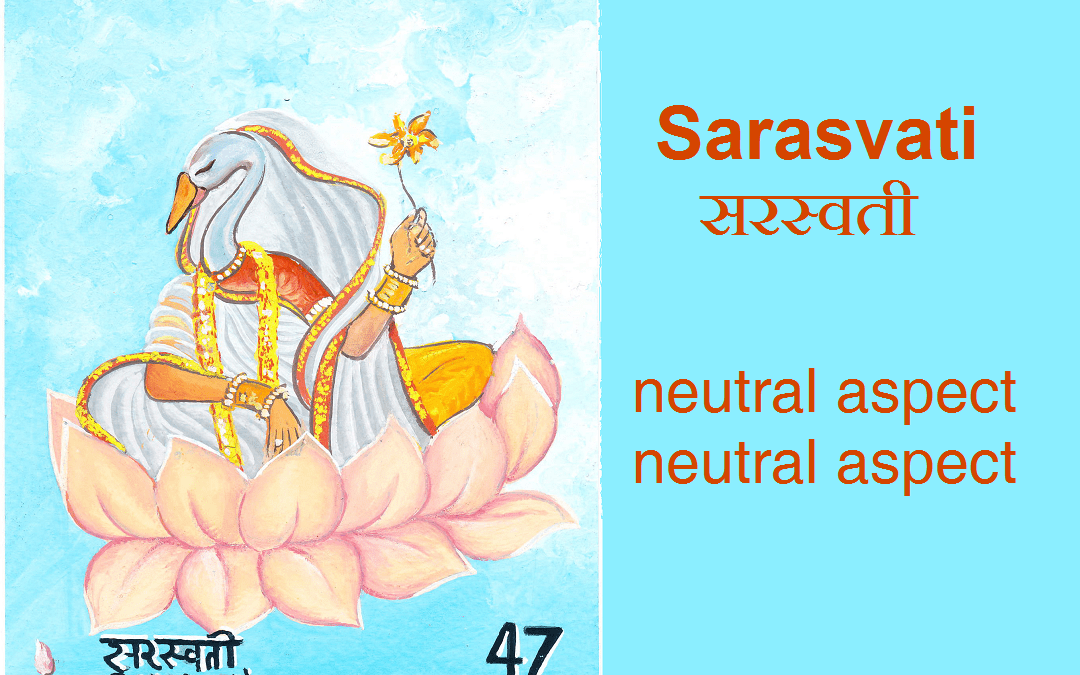Meaning neutral aspect
Interpretation Sarasvati(Neutral aspect, Neutral energy) the plane of the neutral is where the player realises and experiences the sushumna through yogic practices. The sushumna flows through the spine. The idā and thepingalā nāḍī entwine around the sushmna as they meet in the region of the third eye.
Story The earliest known mention of Sarasvati as a river goddess is in the Rig Veda, one of the oldest scriptures of Hinduism. In the Rig Veda, Sarasvati was a major river that flowed through the Indus Valley Civilization. She was associated with fertility, wisdom, and learning, and she was often invoked in hymns and prayers.
As the Indus Valley Civilization declined, the Sarasvati River also declined. By the time of the later Vedic texts, the Sarasvati was no longer a major river, and she was increasingly seen as a goddess of learning and the arts. In the Mahabharata, Sarasvati is the consort of Brahma, the creator god, and she is said to be the mother of the Vedas.
In the Puranas, Sarasvati is further developed as a goddess of knowledge, music, and art. She is often depicted as a beautiful woman with four arms, holding a book, a rosary, a water pot, and a musical instrument called the veena. She is also associated with the white lotus, which is a symbol of purity and knowledge.
The Sarasvati River has been the subject of much archaeological and scientific research in recent years. In the 1960s, scientists discovered that the Ghaggar-Hakra River system, which flows through northwestern India and Pakistan, was once a major river that may have been the Sarasvati of the Rig Veda. However, the Ghaggar-Hakra River system dried up around 1900 BCE, and its exact course is still debated.
On the gameboard Sarasvati is being seen as a metaphor for the game of lodu. The river was a source of life and prosperity for ancient India, and it is said that its waters could grant wishes. In the same way, the game of ludo, it is seen as a way to seek fortune and success.

Recent Comments